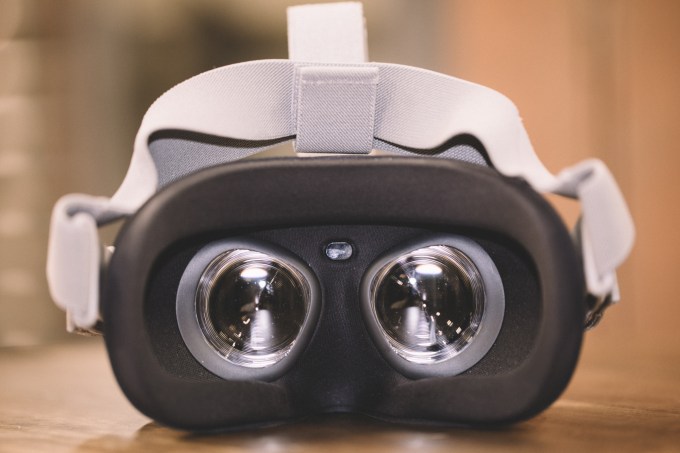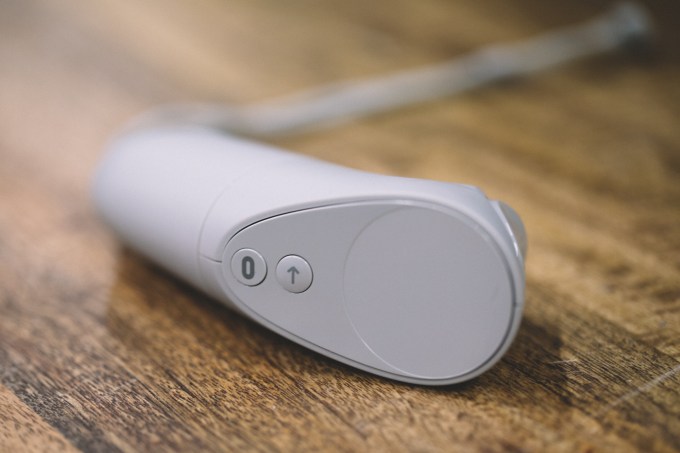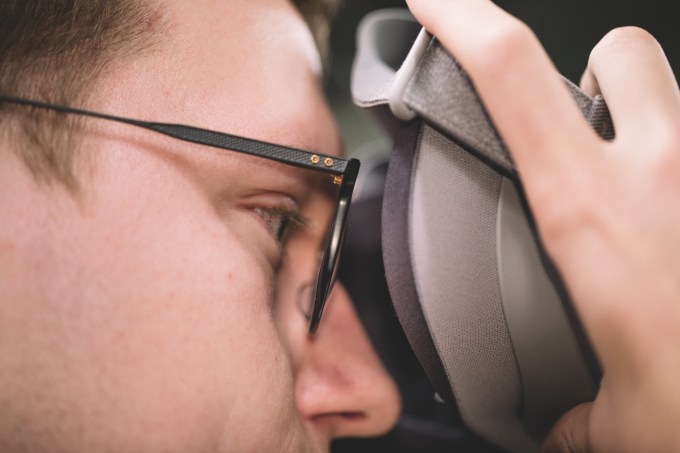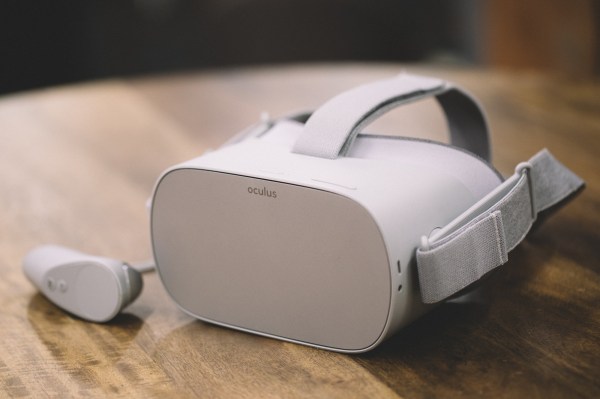Today, at Facebook’s F8 developer conference, the company announced that its cheap and capable Oculus Go virtual reality headset will be going on sale today. The headset costs $199 for the version with 32GB of onboard storage, and $249 for the 64GB variety.
We also finally have eyes on the full hardware specs, which only make it more clear that the Oculus Go is the best deal in VR.
- 190mm x 105mm x 115mm, 468g
- 5.5” 2560 x 1440 WQHD fast-switch LCD screen running at 60Hz or 72Hz
- Qualcomm Snapdragon 821 Mobile VR Platform
- Integrated speakers and microphone
- Battery Life: 1.5-2 hours for gaming, or 2-2.5 for video-watching.

I’ve had about a week to play around with the headset, and this really feels like a game-changer in a lot of ways. There’s something so much more rewarding about just being able to hit a power button and dive into VR without navigating phone and PC menus, fumbling with hardware and dealing with constant updates. The Oculus Go minimizes friction and promotes a surprisingly capable baseline for bringing new consumers into VR for the first time.
The Oculus Go fundamentally feels like a miniature Oculus Rift. The headset’s design echoes that and the experience once you jump in. The headset is, of course, more comparable to the Gear VR when it comes to actual gameplay (they share the same game library), but Oculus has managed to make a number of improvements that make the cheap headset feel deeply luxurious to those familiar with mobile VR offerings to date.

The company has long maintained that bringing your hands into VR is more important than getting your head there. And while this headset does not have tracked controllers, Oculus has done a lot to create software that understands how to translate some lateral hand movements from a fixed elbow position so the interactions you get here feel deeper. It’s still a 3DoF controller, but it feels more robust than the laser pointer with buttons that mobile headsets have had previously.
Another item that I love about this headset is the way they’ve built in-headset stereo audio into the design while still keeping the headset straps fabric and portable. They’ve done this by building vents into the plastic headset strap arms on the sides of the headset; the audio isn’t great, and they leak a lot of noise, but I’m so glad the company did this as it makes getting people set up in VR that much easier. You can still attach some headphones to the Go via a 3.5mm jack, but in most of my early testing I’ve been fine just using the integrated audio.
There are definitely some quality sacrifices that had to be made in order to arrive at the $199 price point. Mainly, the Snapdragon 821 chipset that this device has definitely feels sluggish at times; while I haven’t had any lagging with the Oculus UI elements on the home screen, some of the experiences I demoed on the Go took as long as 30 seconds to boot up. In the course of showing it to a friend, that was enough time for him to decide that maybe he didn’t want to try that app that much after all.

The display does a fine job, but is nothing to write home about. What I did love was the fact that Oculus enlarged the space inside the headset to account for users who wear glasses, removing yet another small point of friction and making the Go friendlier to more users.
Overall though, the headset is far more high-quality than any other on-the-market standalone headset I’ve tried to date, costing hundreds of dollars less than most of that competition as well. This is a testament to Facebook’s willingness to make tight or nonexistent profit margins in order to ensure it remains the leader of the VR market — it also speaks to the fact that Oculus understands mobile VR software better than any competitor, by a country mile.

